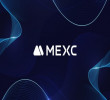7 November 2025
What is Decentralized Finance (DeFi): A Comprehensive Overview
The financial world is undergoing a major makeover thanks to DeFi, short for Decentralized Finance. It's like a cool upgrade to the old-school finance game. With DeFi, regular folks like us can do money stuff without relying on big banks or middlemen. Imagine trading, borrowing, and earning interest without the usual fuss. But, there's a catch—new ways bring new challenges. Security and understanding can be a bit tricky. If DeFi plays its cards right, it could shake up the whole global money scene. So, get ready for a wild ride as we dive into the world of DeFi, where finance meets futuristic freedom!
Check our latest video on YouTube - DeFi Decoded: Unveiling a New Era of Financial Freedom
Understanding DeFi
Decentralized Finance, or DeFi, refers to a rapidly expanding ecosystem of financial applications and services built on blockchain technology. At its core, DeFi aims to replicate, enhance, or even replace traditional financial services by leveraging the transparency, security, and efficiency of blockchain networks. Unlike centralized financial institutions, DeFi platforms operate in a decentralized manner, where smart contracts execute predetermined actions without the need for intermediaries.
Bybit offer: Deposit $50, and GET 10 USDT (withdrawable)!
Key Components of DeFi
1. Blockchain Technology: The foundation of DeFi is blockchain, a distributed and immutable ledger that records all transactions transparently. Ethereum, the leading blockchain platform for DeFi, introduced the concept of smart contracts—self-executing agreements with predefined rules—enabling the creation of complex financial instruments.
2. Smart Contracts: Smart contracts are the backbone of DeFi applications. These self-executing contracts automatically enforce the agreed-upon terms of an agreement when predefined conditions are met. They facilitate trustless interactions by eliminating the need for intermediaries and reducing counterparty risks.
3. Decentralized Applications (DApps): DApps are software applications that run on blockchain networks. In the DeFi realm, DApps provide various financial services such as lending, borrowing, trading, and yield farming. Examples include Compound, Aave, Uniswap, and MakerDAO.
4. Liquidity Pools: Liquidity pools are a fundamental element of DeFi protocols that enable users to lend or provide assets to the pool in exchange for rewards. These pools facilitate decentralized trading and contribute to price stability within the ecosystem.
5. Tokenization: DeFi often involves tokenization, where real-world assets are represented as digital tokens on the blockchain. This allows for fractional ownership, enhanced liquidity, and accessibility to a wider range of investors.
Benefits of DeFi
1. Accessibility: DeFi opens up financial services to a global audience, including those without access to traditional banking systems. Users can participate in DeFi applications using only an internet connection and a cryptocurrency wallet.
2. Interoperability: DeFi protocols are often designed to be compatible with each other, fostering interoperability within the ecosystem. This enables users to seamlessly move assets and liquidity between different platforms.
3. Transparency and Security: Transactions and activities on DeFi platforms are recorded on the blockchain, ensuring transparency. Moreover, the use of cryptographic techniques enhances security, making DeFi platforms resistant to hacks and fraud.
4. Financial Inclusion: DeFi has the potential to bring financial services to the unbanked and underbanked populations around the world, providing them with opportunities to save, invest, and access credit.
Challenges and Considerations
1. Smart Contract Risks: While smart contracts enhance efficiency, they are not immune to vulnerabilities. Flaws in the code can lead to financial losses, as demonstrated by various high-profile exploits in the DeFi space.
2. Regulatory Uncertainty: The rapid growth of DeFi has attracted the attention of regulators worldwide. Navigating evolving regulatory frameworks poses a challenge for DeFi projects, potentially affecting their operations.
3. Scalability: Blockchain networks, particularly Ethereum, have faced scalability issues due to the high demand placed on them by DeFi applications. This has led to congestion and high transaction fees during peak times.
4. User Education: DeFi involves complex financial concepts and technology. Ensuring that users have a clear understanding of how these systems work is essential to prevent unintended mistakes.
The Future of DeFi
DeFi's rapid evolution suggests that it is more than just a passing trend. As the ecosystem matures, several trends are likely to shape its future:
1. Improved Scalability: Solutions like Ethereum 2.0 and layer 2 scaling solutions aim to enhance the scalability of blockchain networks, reducing congestion and transaction fees.
2. Regulatory Adaptation: DeFi projects will likely need to collaborate with regulators to establish a regulatory framework that ensures both innovation and consumer protection.
3. Integration with Traditional Finance: DeFi and traditional finance will likely converge as institutions recognize the benefits of blockchain technology and explore collaborations with DeFi projects.
4. Enhanced Security Measures: Learning from past exploits, DeFi projects will likely place a stronger emphasis on security audits and mechanisms to minimize risks.
Conclusion
Decentralized Finance (DeFi) represents a groundbreaking shift in the way financial services are conceptualized, delivered, and accessed. Through blockchain technology, smart contracts, and decentralized applications, DeFi offers a new paradigm of financial inclusion, transparency, and efficiency. While challenges such as regulatory uncertainties and technological scalability need to be addressed, the trajectory of DeFi points toward a future where traditional finance and decentralized systems seamlessly coexist, reshaping the global financial landscape. Understanding and embracing this transformative force will undoubtedly be a key aspect of navigating the future of finance.
Disclaimer: The author’s thoughts and comments are solely for educational reasons and informative purposes only. They do not represent financial, investment, or other advice.






